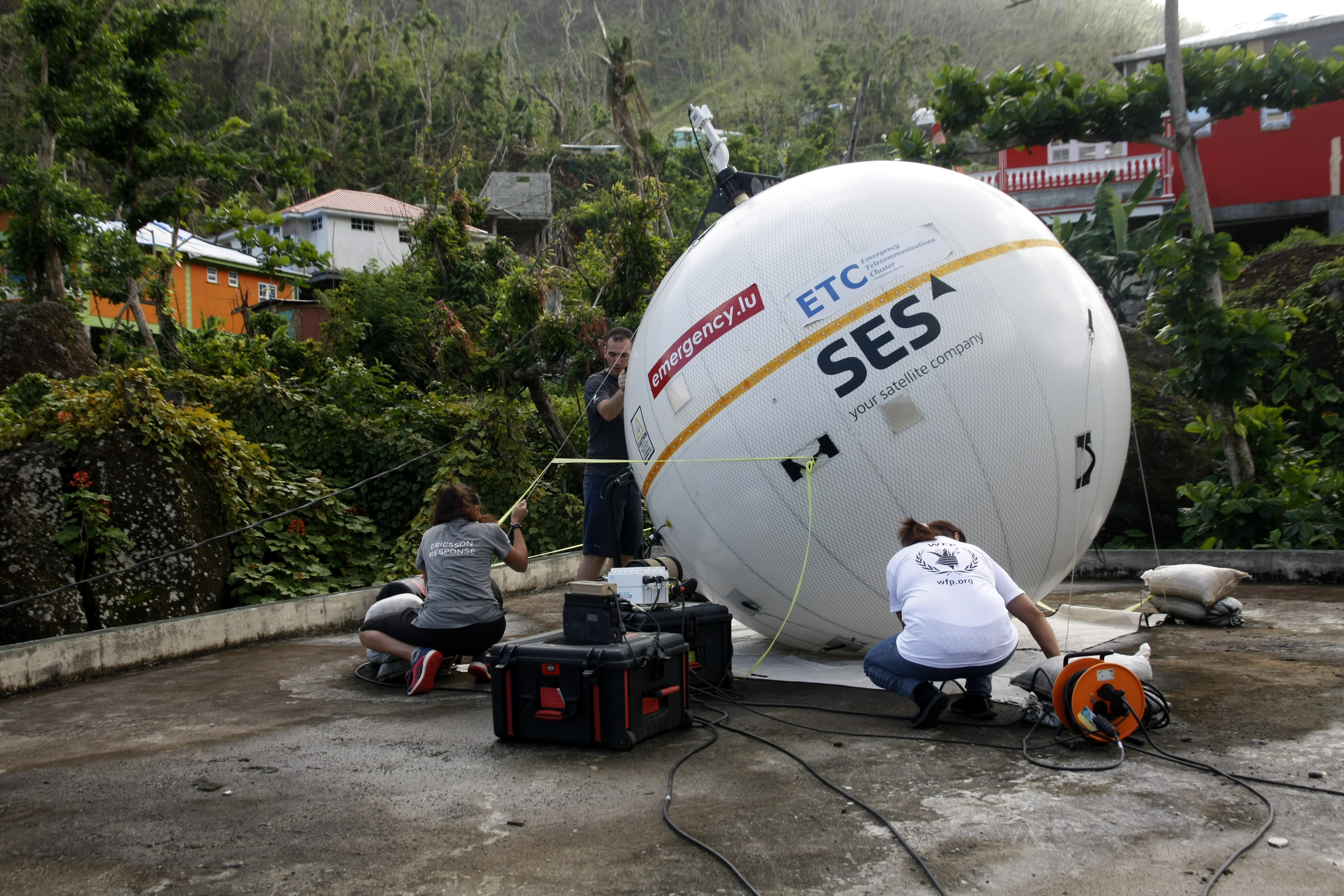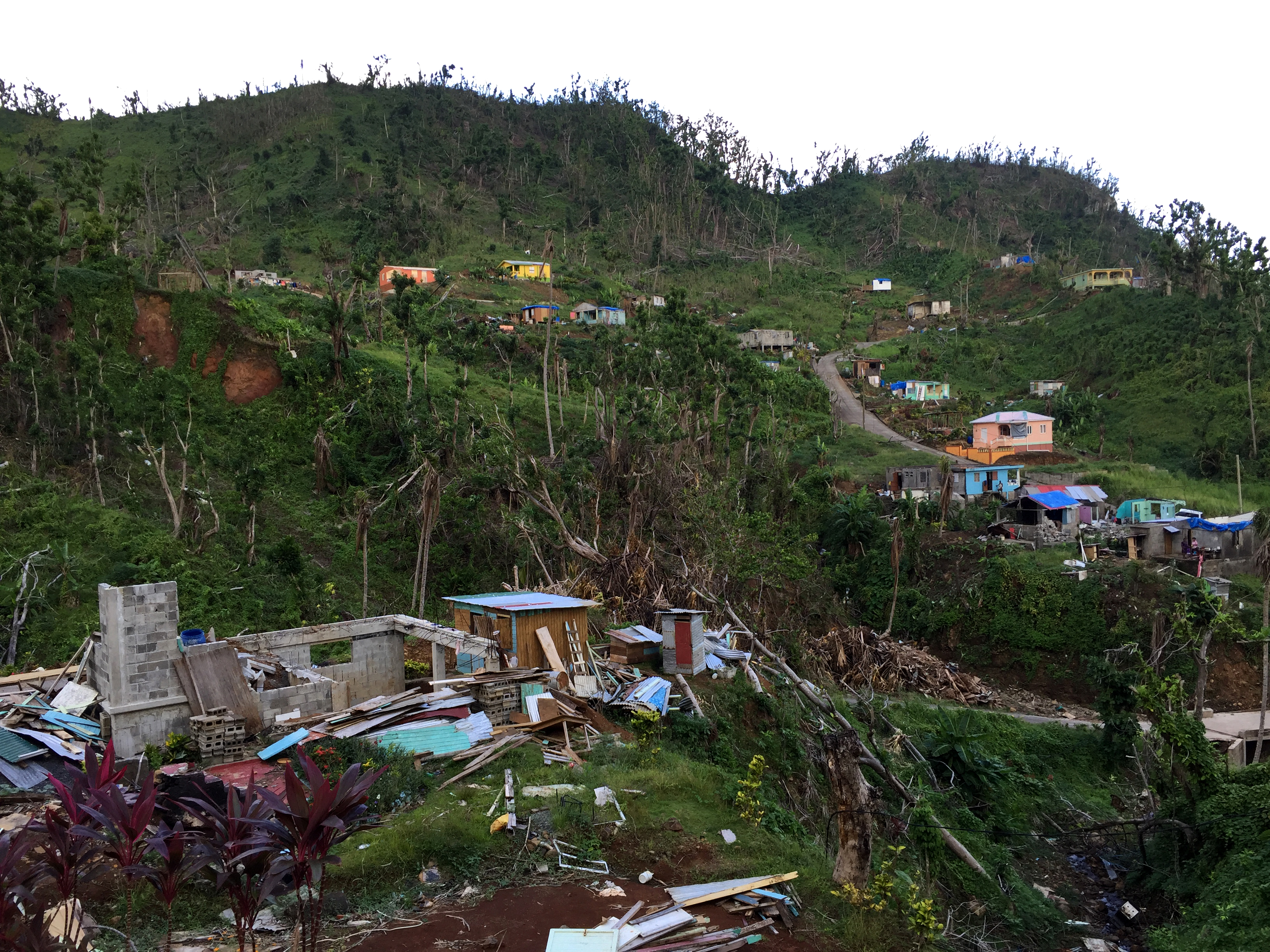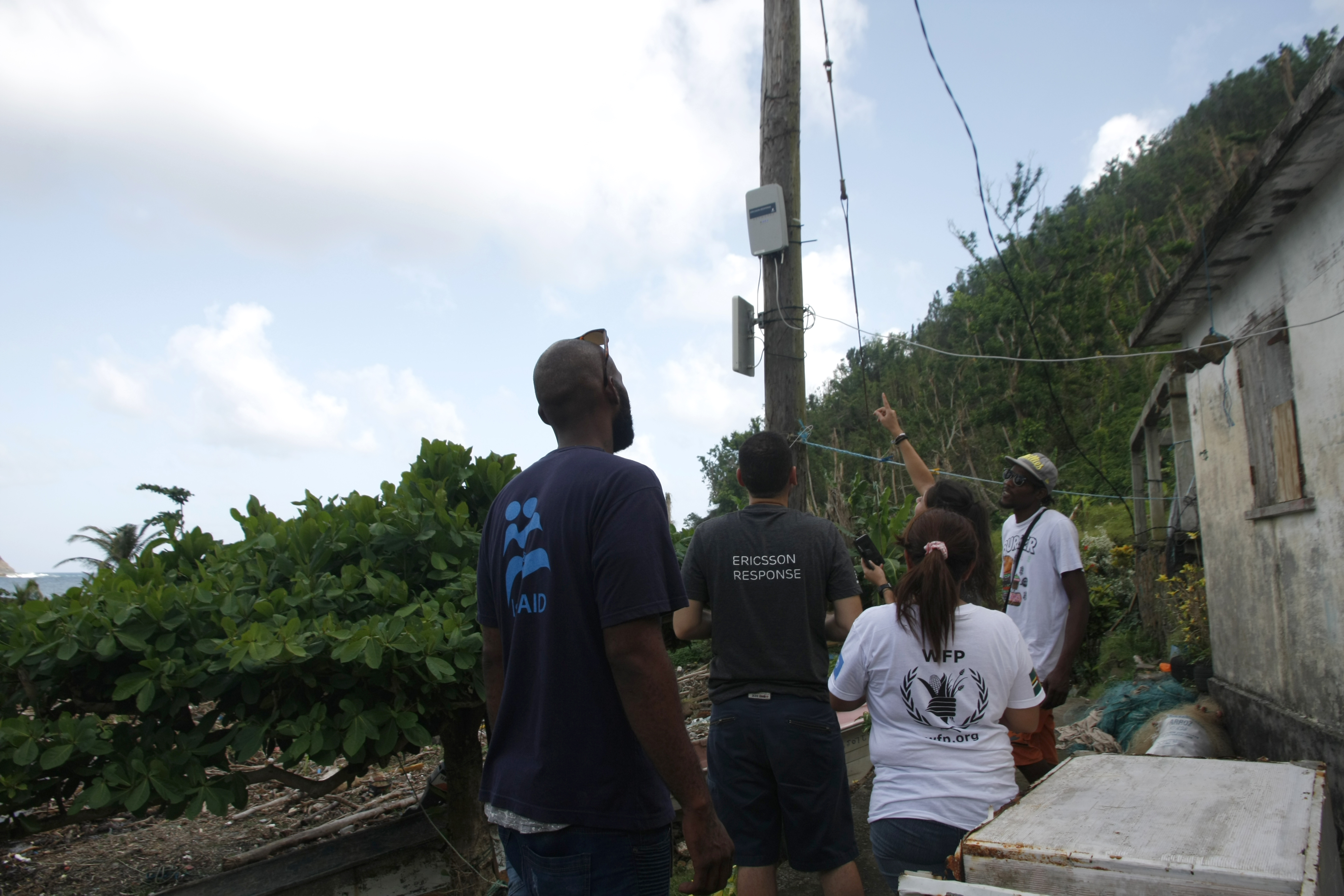
[Guest Article from WFP] Restoring connectivity helps people make informed decisions
An outlandish big white ball stands out among the school, a church with a twisted cross and a dozen fishing boats in the community of Saint Sauveur. It is the most visible sign of a quick-deploy satellite installed by the Emergency Telecommunications Cluster (ETC) — led globally by the World Food Programme (WFP) — and Ericsson Response engineers, supported by the Government of Luxembourg, to help communities reconnect with the outside world after Hurricane Maria.

Stay or leave, and why communications matter in emergencies
In September 2017, Hurricane Maria destroyed everything that people had in the small towns of Dominica. As locals say, the eight-hour curse brought winds that sounded like a bird in a cage, but the worst came at dawn. The sun highlighted the rubble, and all that was visible was trash and shadows.
Everything was gone — including communications (...)

Humanitarian hotspots against silence
A few hours after the hurricane made landfall on Dominica, engineers from the WFP and Ericsson Response were trying to ensure that affected people on the island were reachable and could receive humanitarian assistance by accessing updated information and being able to contact their relatives abroad.

That is why the “big white balls” and the WiFi hotspots have been installed in remote communities like Saint Sauveur and Good Hope, involving both the government and the communities in the process. The locals are watching and protecting the equipment, as well as taking care of the people working with it.
Read the full article on the World Food Programme Insight